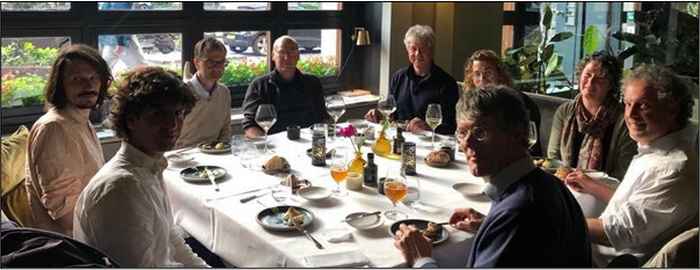Exploring Emergence at IAS
11 December 2023

Emergence in different disciplines
First, we posed the question how different fields use emergence as a tool, or even an organising principle. Introductions were held by Erik Verlinde, Sebastian de Haro, Klaas Landsman, Han van der Maas and Sarah Durston. Erik introduced the concept of information and discussed its relationship with emergence. He argued that successful theories in physics condense information into relevant descriptions. He challenged the idea that emergence is solely a property of nature, highlighting the role of humans in studying physics. Sebastian explored the compatibility between reduction and emergence and discussed the relationship between these concepts in a philosophical sense.
Klaas explored the concept of emergence in relation to thermodynamics, and discussed challenges and paradoxes associated with understanding and defining emergent theories. These include an idealization being necessary for an emergent theory to be autonomous (there are no idealizations in nature) and the fact that thermodynamics can emerge from different microscopic settings. Next Han switched from physics to psychology to talk about cascading transitions, where if one’s percept of a single stimulus changes it will equally affect the perception of its neighbours (Figure 1.) He went on to argue that (weak) emergent properties may also have downward causation properties, where, in a murmuration for example, the behaviour of the flock can influence that of a single bird. Finally, Sarah spoke about predictive coding in neuroscience, the phenomenon that our prior experience, expectations and beliefs affect how we perceive the world around us.

A conversation about theoretical emergence
After the break, a lively discussion ensued where we discussed the relations between the physical, mental and platonic realms, and whether theoretical emergence (where theories emerge from other theories) relates to the ‘real world’. Whether emergence even exists in the physical realm, or whether it is only in our (platonic) description of it. Furthermore, in cases of physical emergence that can be described mathematically, as in the case of thermodynamics, it requires taking a parameter to its limits. And this is something that does not occur in nature. It is something scientists do, mathematically. Yet emergence occurs in nature, without us (or does it?). In psychological theory, we are nowhere near to approximating emergence mathematically. Or deriving a formula, for example, for how consciousness emerges from brain function. What parameter would you even need to take to its limit? Number of neurons, connections, computations? It is entirely unclear.
Fun was had, a lot of ground was covered. The discussion ran over and then continued well into dinner. Perhaps a good place to leave this summary is with a quote from physicist John Wheeler, who said “every law [in physics], when pushed to the extreme, will turn out to be statistical and approximate, not mathematical and precise”, and the question asked in response by recent philosophy and physics graduate (and carpenter), Maarten Klop: “But if every law is an approximation, then what does it approximate?” It is safe to say we found no answers. Our primary conclusion was that these discussions need to be continued, within havens for slow science, such as DIEP and IAS.